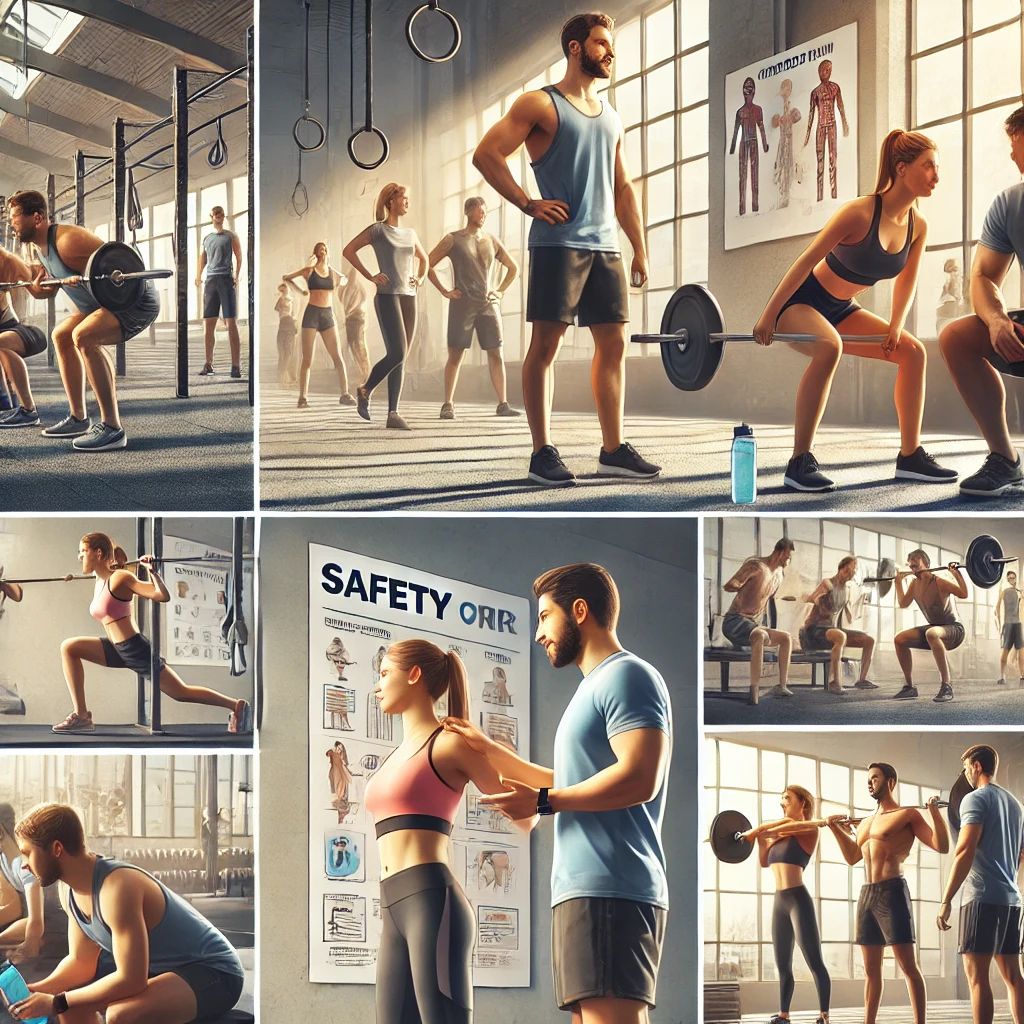
Embarking on a fitness journey is a commendable and transformative pursuit. It’s a path to better health, increased energy, and a more positive outlook on life. However, as with any physical endeavor, the risk of injury looms. Injuries can derail progress, sap motivation, and lead to extended periods of inactivity. The good news is that with proper knowledge and precautions, many fitness injuries can be avoided. Here are some essential tips to help you stay safe and injury-free as you work towards your fitness goals.
Understanding the Importance of Warm-Up and Cool-Down
One of the most fundamental ways to prevent fitness injuries is to incorporate a proper warm-up and cool-down routine into your workouts.
Warm-Up: A good warm-up prepares your body for the physical exertion ahead. It increases blood flow to your muscles, raises your body temperature, and enhances flexibility. Start with light aerobic exercises such as brisk walking, jogging, or jumping jacks for about 5-10 minutes. Follow this with dynamic stretches that mimic the movements of your workout, such as leg swings, arm circles, and torso twists.
Cool-Down: Just as important as warming up is cooling down after your workout. This helps your body transition back to a resting state and reduces muscle stiffness. Spend 5-10 minutes performing gentle exercises like walking or light jogging, followed by static stretches targeting all major muscle groups. Holding each stretch for at least 15-30 seconds can improve flexibility and aid in muscle recovery.
Emphasizing Proper Form and Technique
Using correct form and technique during exercises is crucial in preventing injuries. Poor form can place undue stress on joints, muscles, and ligaments, leading to strains and sprains.
Learn from Experts: If you’re new to exercise or trying a new workout, consider working with a certified personal trainer. They can teach you the proper form and technique, ensuring you perform exercises safely and effectively. Many gyms offer introductory sessions with trainers, and there are numerous online resources and videos that provide detailed instructions.
Listen to Your Body: Pay attention to how your body feels during exercise. If you experience pain (as opposed to the normal discomfort of exertion), stop immediately. Pain is a signal that something is wrong. Adjust your form, reduce the weight, or modify the exercise to avoid injury.
Progress Gradually
A common mistake that leads to injuries is doing too much too soon. Whether you’re lifting weights, running, or practicing yoga, it’s important to increase the intensity, duration, and frequency of your workouts gradually.
Follow the 10% Rule: Avoid increasing your workout intensity or duration by more than 10% per week. This gradual progression allows your body to adapt to the new demands, reducing the risk of overuse injuries.
Rest and Recovery: Incorporate rest days into your fitness routine. Your body needs time to repair and strengthen the muscles that were stressed during workouts. Overtraining can lead to fatigue, decreased performance, and a higher risk of injuries. Listen to your body and take rest days seriously.
Cross-Training for Balanced Fitness
Engaging in a variety of exercises, known as cross-training, can prevent overuse injuries and improve overall fitness. Different activities work different muscle groups and reduce the repetitive strain that can occur from doing the same exercise repeatedly.
Mix It Up: Incorporate different types of workouts such as strength training, cardio, flexibility exercises, and balance training. This not only keeps your routine interesting but also ensures a well-rounded fitness regimen.
Recovery Activities: Include low-impact activities like swimming, cycling, or yoga in your routine. These exercises can aid recovery while still keeping you active.
Proper Equipment and Environment
Using the right equipment and exercising in a safe environment are critical components of injury prevention.
Footwear: Invest in good-quality, activity-specific shoes. Proper footwear provides support, absorbs shock, and reduces the risk of injuries such as sprains and stress fractures. Replace your shoes regularly, as worn-out footwear can lose its protective features.
Equipment: Ensure that any equipment you use, whether at home or in the gym, is in good condition and used correctly. Adjust machines to fit your body size and follow all safety guidelines.
Environment: Choose safe and appropriate locations for your workouts. If running or cycling outdoors, be mindful of the terrain and weather conditions. In the gym, be aware of your surroundings to avoid accidents.
Hydration and Nutrition
Staying hydrated and fueling your body with the right nutrients are essential for peak performance and injury prevention.
Hydrate: Drink water before, during, and after your workouts. Dehydration can lead to muscle cramps, dizziness, and fatigue, increasing the risk of injury.
Nutrition: Eat a balanced diet rich in vitamins, minerals, and proteins to support muscle recovery and overall health. Consider eating a small snack that includes carbohydrates and protein about 30 minutes before working out to fuel your body and enhance performance.
Mental Preparedness
Physical fitness also requires mental readiness. Being mentally prepared helps you stay focused and execute exercises safely.
Focus: Concentrate on your movements and technique rather than allowing your mind to wander. Mindfulness in exercise can enhance performance and reduce the risk of accidents.
Mindset: Maintain a positive attitude and be patient with your progress. Understand that fitness is a journey, not a sprint. Celebrate small victories and stay motivated by setting realistic, achievable goals.
Conclusion
Incorporating these tips into your fitness routine can significantly reduce the risk of injuries, allowing you to enjoy a safe and effective fitness journey. Remember, the goal is not just to push your limits but to do so in a way that keeps your body healthy and strong. Listen to your body, respect its signals, and take the necessary steps to protect it. By prioritizing injury prevention, you can achieve your fitness goals with confidence and sustainability, paving the way for a lifetime of health and wellness.


